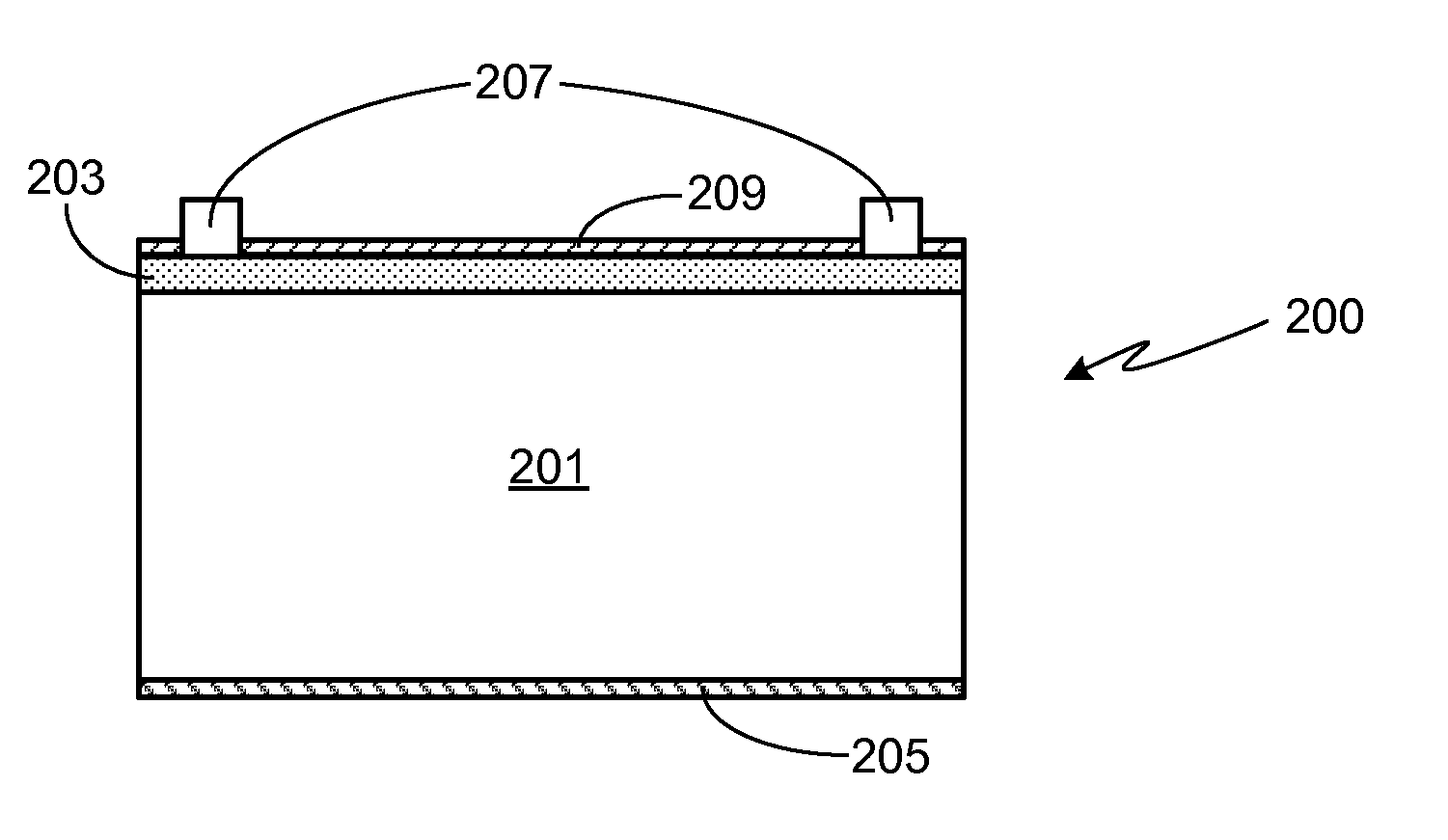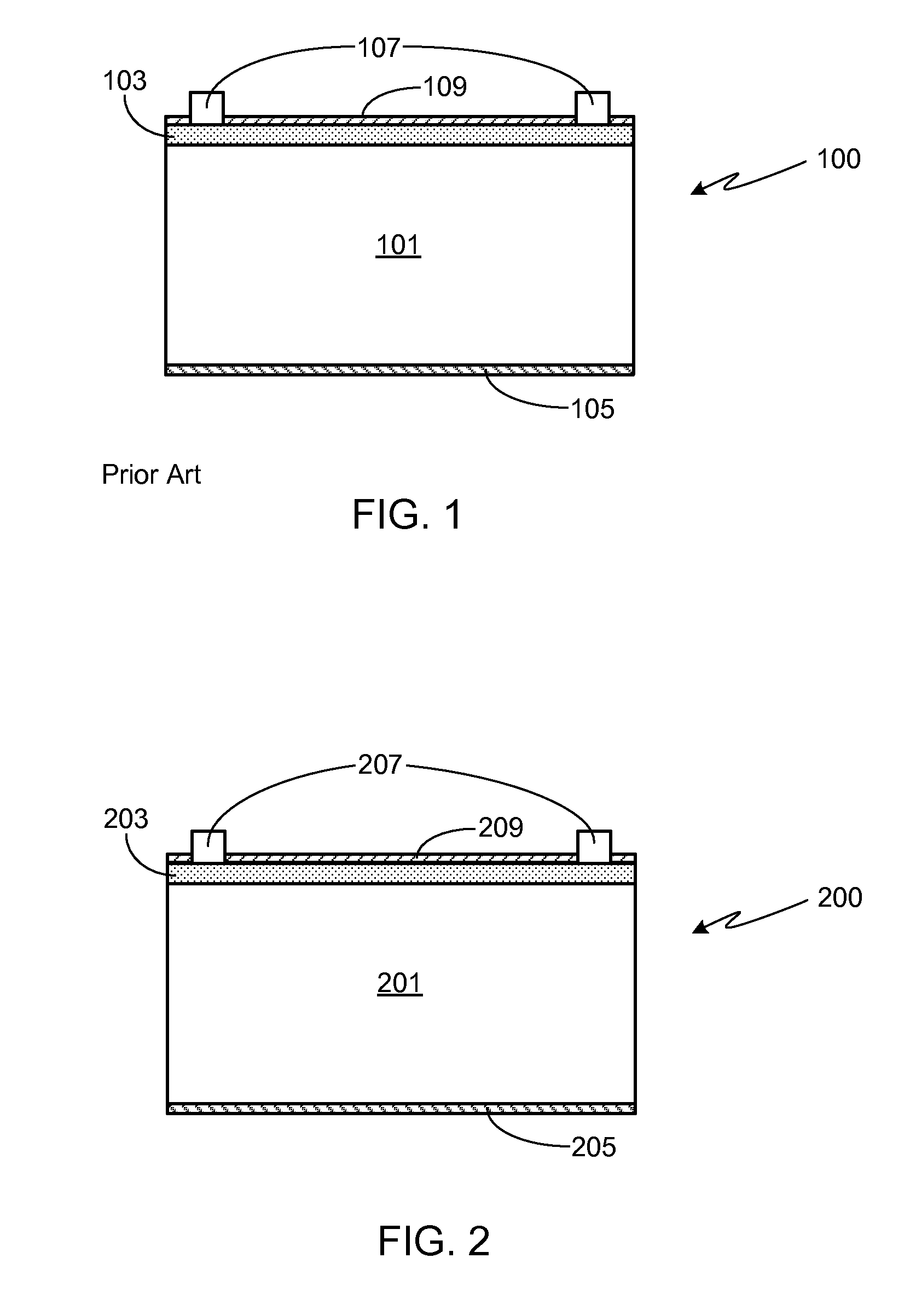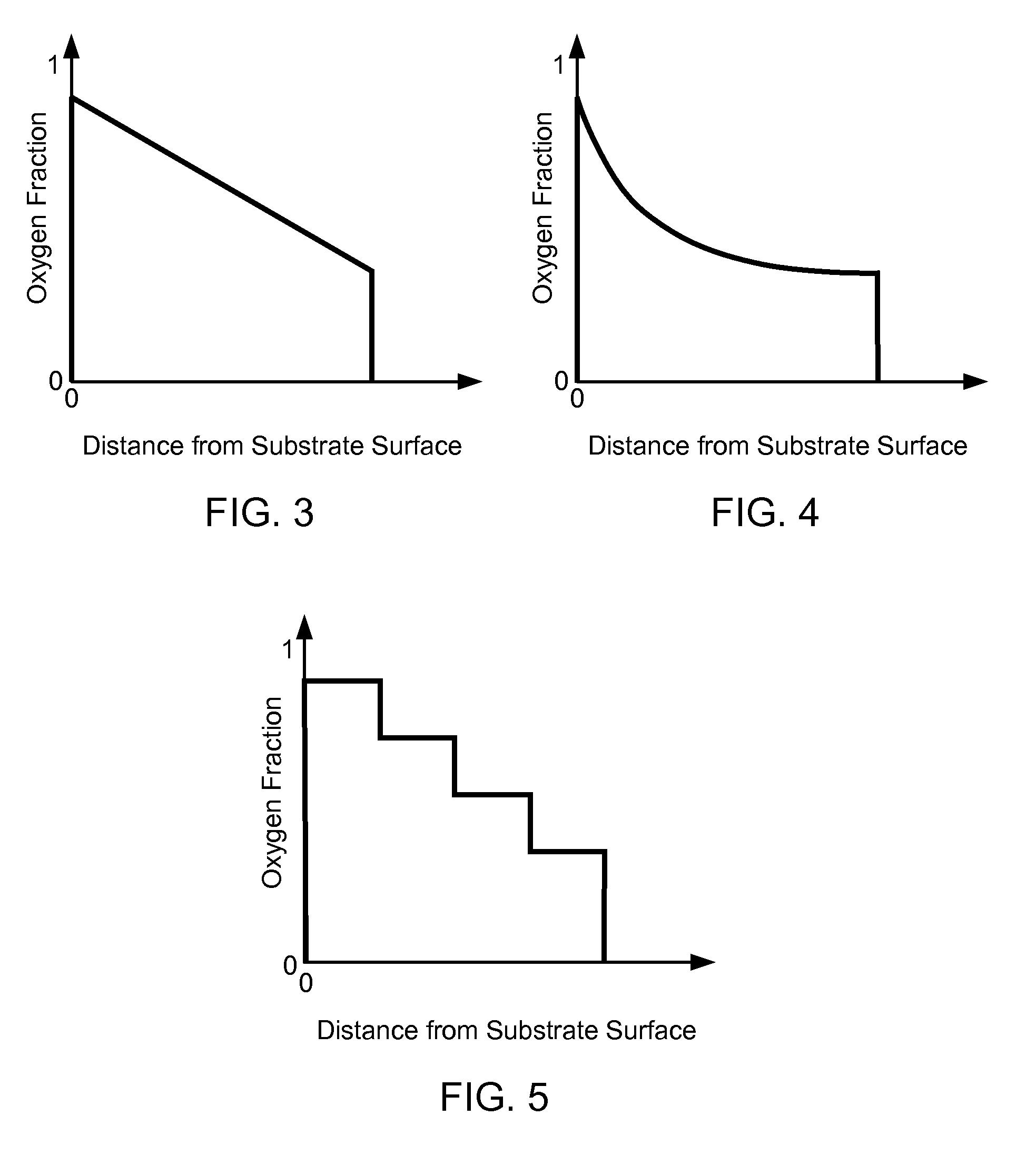Polarization Resistant Solar Cell Design Using an Oxygen-Rich Interface Layer
- Summary
- Abstract
- Description
- Claims
- Application Information
AI Technical Summary
Benefits of technology
Problems solved by technology
Method used
Image
Examples
Embodiment Construction
[0018]The inventors have found that the incorporation of an oxygen-rich interface layer in the solar cell design can substantially reduce, if not altogether eliminate, the device degradation that typically occurs in a conventional solar cell that is subjected to a large electric field across the dielectric layer(s). FIG. 2 provides a cross-sectional view of a solar cell device structure 200 in accordance with a preferred embodiment of the invention. Silicon substrate 201 may be of either p- or n-type. As with a conventional solar cell, a silicon layer 203 of a second conductivity type is formed on substrate 201, thereby forming the cell's p-n junction. A rear surface electrode 205, for example comprised of aluminum, contacts at least a portion of substrate 201 or, as shown, the entire back surface of the substrate. To contact the front surface of the device, more specifically layer 203, preferably a plurality of front surface electrodes 207, preferably comprised of silver, are appli...
PUM
 Login to View More
Login to View More Abstract
Description
Claims
Application Information
 Login to View More
Login to View More - R&D
- Intellectual Property
- Life Sciences
- Materials
- Tech Scout
- Unparalleled Data Quality
- Higher Quality Content
- 60% Fewer Hallucinations
Browse by: Latest US Patents, China's latest patents, Technical Efficacy Thesaurus, Application Domain, Technology Topic, Popular Technical Reports.
© 2025 PatSnap. All rights reserved.Legal|Privacy policy|Modern Slavery Act Transparency Statement|Sitemap|About US| Contact US: help@patsnap.com



